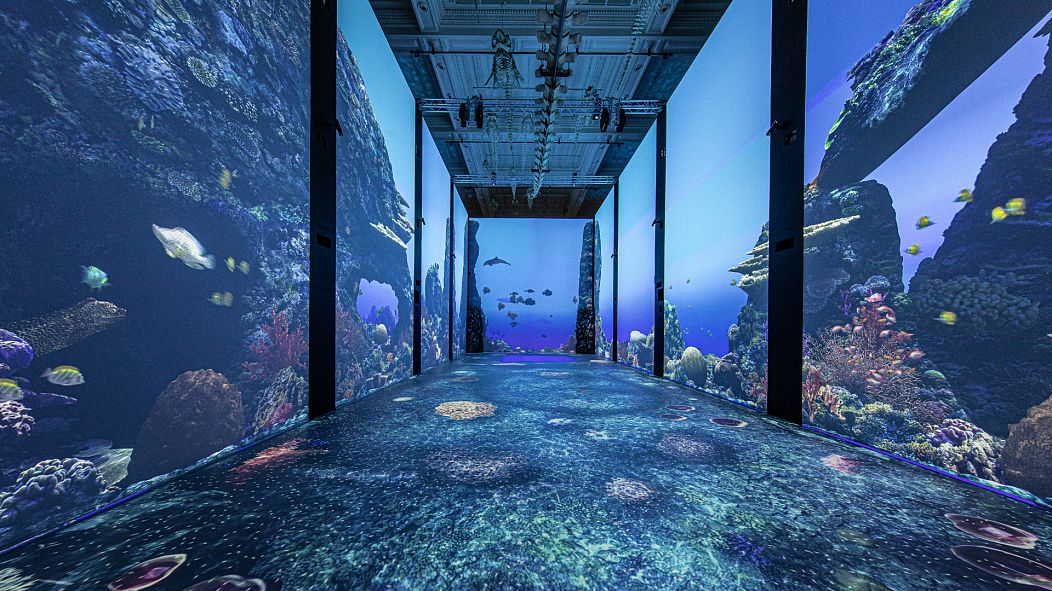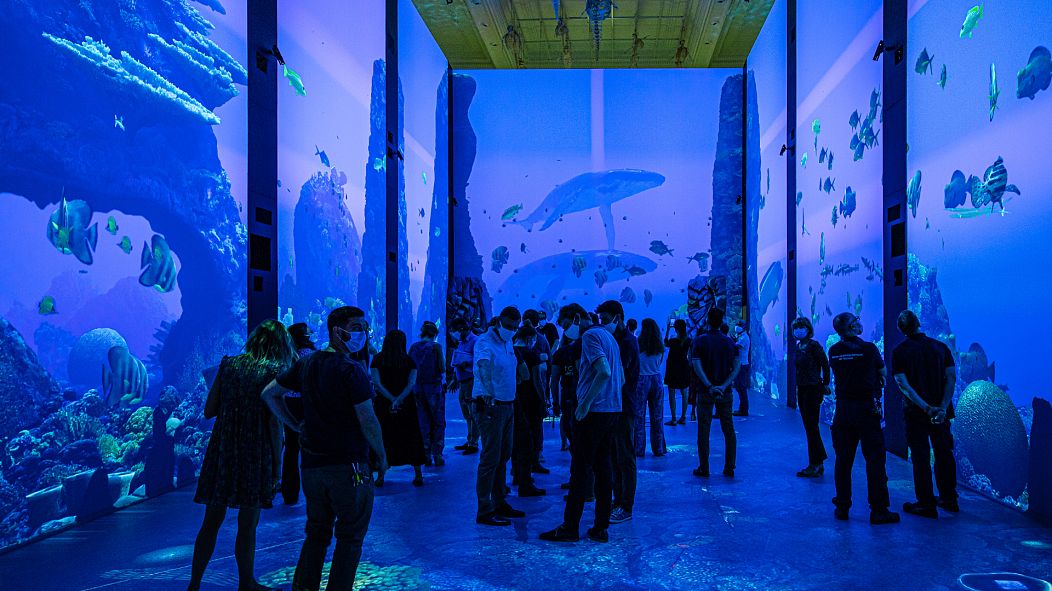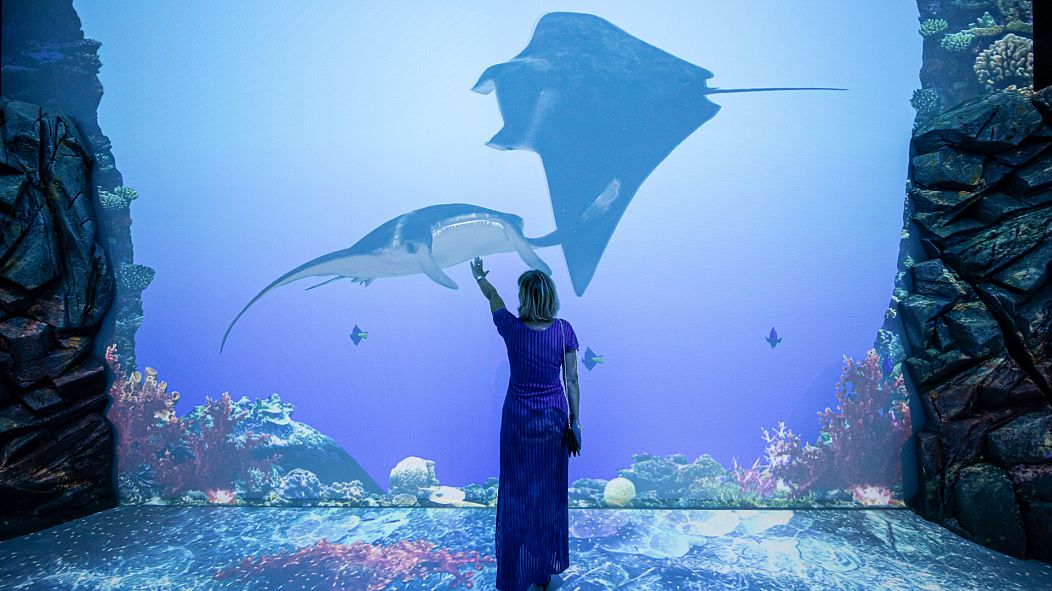The 360 degree immersive exhibit is a chance to discover one of the seven natural wonders of the world.
The Oceanographic Museum of Monaco is offering visitors a chance to go on a virtual deep dive to the bottom of the sea, in its newly unveiled immersive exhibition.
The interactive installation is the museum’s latest attempt to raise awareness around the need for ocean conservation, so that we don’t lose precious marine species as climate change gets worse.
Guests are immersed in a 360 degree underwater exhibition, which projects the Great Barrier Reef onto all four walls in real-time. Described as a “virtual replica” of the iconic Australian reef, the projection is a rare chance to meet all kinds of species. From fluorescent corals to humpback whales, you’re being invited into their very own habitat.
While they cover only 0.2 per cent of the world’s seafloor, coral reefs are home to 25-30 per cent of marine biodiversity. These oases of life, essential to humankind in many ways, face mass extinction as a result of marine pollution and rising sea levels. Not only is plastic pollution a global problem, but with sea levels getting higher and higher, pesticides and nutrients used in agriculture can end up in coastal waters, resulting in oxygen depletion that kills marine plants and shellfish.
Inside the exhibition, rooms come alive in both daylight and night mode.
Immersive exhibitions such as this have the power to offer us an enhanced level of interaction with life under the sea. Through a combination of real and computer-generated images, the experience comes to life and is described as “ultra-realistic”. Much like a diver on their exploration, different species can be seen moving naturally around the room and will communicate according to your behaviour, movements and gestures.
“We wish to offer a selection of the most beautiful diving moments in record time, to move and challenge the audience to consider the future of these ecosystems in danger,” says Eva Muller, Head of the Exhibition Department.
What's it actually like inside?
How realistic is the experience? As you enter, barracudas rush towards you and then avoid you at the last minute, while giant clams close up and cuttlefish change their camouflage. Underfoot, the bioluminescence of the plankton is slowly revealed and a carpet shark swims away to hide, waiting for its prey. There are 650 m² of projection to explore and 60 species to discover in total.
This advanced technology allows Monaco’s Oceanographic Museum to push the boundaries of what is possible, creating a link between humankind on earth and ecosystems under the sea. The exhibition is the legacy of Prince Albert I, nicknamed “Prince of the Seas”, who founded the Oceanographic Institute.
“It is a very ambitious system, with an unprecedented level of scientific rigour, scenaristic precision and fluidity of rendering,” says Olivier Ferracci from conceptual event company Dreamed By Us. “From this point of view, we can say that it is almost a world first.”
The exhibition began this summer and will be available to visit until December 2021. For more information on opening times and prices, visit the website.














